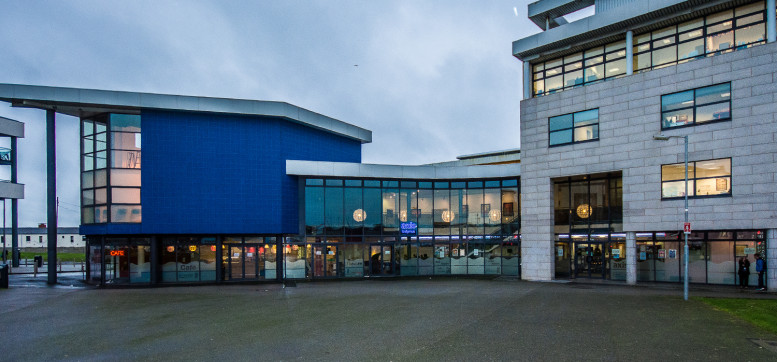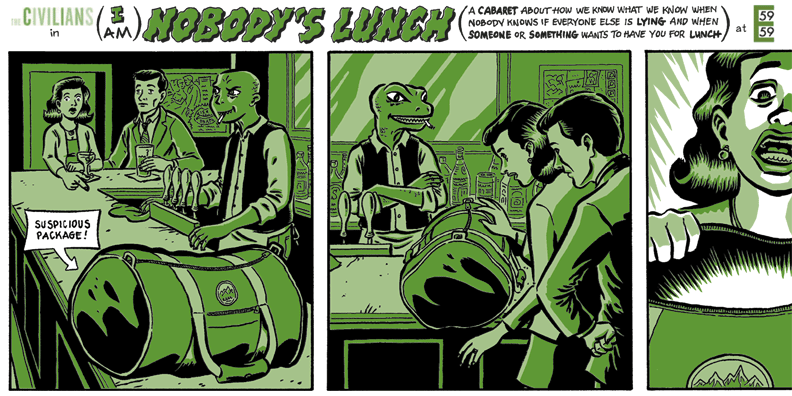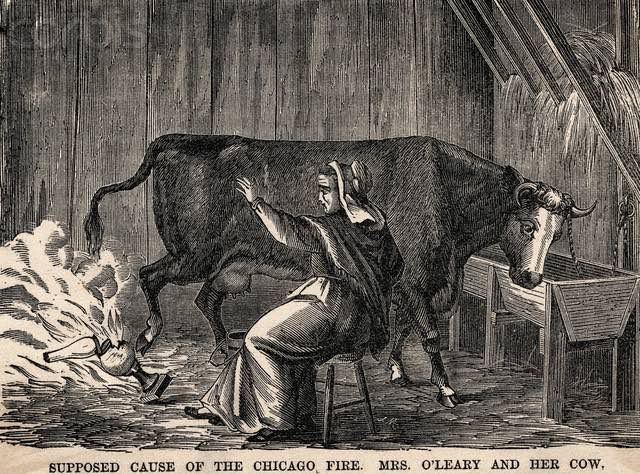Axis Ballymun is a multi-purpose arts center that has served the Ballymun community in North Dublin for the past 15 years. Its lifespan has accompanied a 20-year regeneration project in Ballymun, a 50-year-old area in which large public housing towers once dominated the skyline and basic services, such as grocery stores and public parks, were nearly nonexistent. Since 1997, however, the regeneration effort overseen by Ballymun Regeneration Limited (BRL), has dramatically transformed the area without displacing its 30,000 residents. BRL demolished the nearly 50 public housing towers and replaced them with housing units more stylistically recognizable to Dublin residents. And through the support and initiative of community residents, organizations like Axis are filling cultural needs that were long neglected in Ballymun.
Extended Play’s Tommy O’Malley recently toured Axis Ballymun’s facilities with Program Manager Niamh Ní Chonchubhair, who talked about Axis, the community it serves, and the distinction between regeneration and gentrification. Their original conversation had been edited for print.
BALLYMUN REGENERATED
TOMMY O’MALLEY: Visiting Axis Ballymun, the first thing I noticed is that you have a café on the main floor, which immediately makes me wonder about the various ways in which you all are serving the community and drawing from community resources to create art.
NIAMH Ní CHONCHUBHAIR: The cafe is open to the public every day. It is staffed by local people, and it’s one of the few cafes in the area. I might actually go back a bit before rejoining that point, because understanding what Axis does, and who it is of, helps you understand who it is for, as well.
Ballymun, as you know, is undergoing — or underwent, it’s kind of largely completed — one of the largest regeneration programs that Europe has ever seen. It was essentially a housing project — that’s the nearest kind of associated thing you could call it — that was built in the late 1960’s, and it was the great white hope. Everybody wanted a flat in Ballymun; they were coveted. But a lot of the structures and resources that a community needs to be a community weren’t really factored in. There wasn’t a great shopping center. There weren’t enough parks. It was around the time where the government was closing down mental institutions and beginning this “care in the community” thing. A lot of people would have been moved into flats in Ballymun without the support to transition.
The history of gathering and activism in this community is remarkable. There is an epic film or thesis or something in there.
It was a great idea, but the problems in it began to show. And up until, for instance, the 80’s, it became renowned for a lot of social issues — poverty, crime, addiction, and so on and so forth. For a lot of people, it was the town that you drove through on your way from the airport into Dublin, which is awful because the community was so much more than the headlines. The history of gathering and activism in this community is remarkable. There is an epic film or thesis or something in there. So honestly these problems could not go on ignored, and there was a lot of campaigning and advocacy. And that’s how the regeneration came about.
When the BRL was founding, through community consultation, the impetus for Axis to exist came from local people — individuals, artists, groups in the community. When they were asked, “If we are reimagining this town, as we need to, what is important?’ And an arts center, as well as a community center, was what people of this area deemed to be important. That is why we are sitting here. It is because of that impetus, it is because of that drive, because of that commitment and that passion. And why we’re still here is because we collectively — not just people who work here, but the community — work very hard on maintaining, sustaining and honoring that every day. And letting it evolve, because people evolve. Communities evolve.
Within a community, there’s a diverse range of passions, interests, talents — but also levels of interest. So for some people, Axis might mean the café. For some of them, it’s where their mother finally went and did a dance class and found the confidence to perform on stage, at age 63. Do you know what I mean? So Axis is many things to many people, but it was born of many people, so it should be. It doesn’t fit neatly into one box.
ACCESS TO AXIS: A MISSION ENACTED
TOMMY: If you had to compartmentalize the different facets of the Axis mission, what would that look like?
NIAMH: In order to kind of break it down into bite size chunks — you know, they cross-pollinate — but at the heart of the Venn diagram of what we do should be this kind of notion of excellence and inclusion. Creatively, we want things that we do to be as excellent as possible, but as inclusive as possible.
So if you break it down, we’re a venue. We’re an arts center, so we have a theater, a small gallery space, a dance studio, an art studio, and in the basement we have a recording studio and music rehearsal rooms. We are an arts hub with creative spaces. As a venue, we receive work that’s everything from theater to music. We do a lot of family program, children, and young people’s programming. Comedy, dance… We try to program things when the conditions are right. We’re also a producing venue. So we like to produce events, theater shows mainly, at least once a year.
TOMMY: How involved are you in that process?
NIAMH: I think it’s very important to be involved in the making of art, rather than just being this “arts manager.” I didn’t know what an arts manager was when they were talked about in articles, where they kind of sit there saying no and counting paperclips. I don’t understand what that is. I’m definitely a manager and administrator, but one who is very, very creatively plugged into the making of work. I think that you should be spending as much time with artists as you should be in Excel. And the non-sexy stuff is very, very necessary, and it is not what gets me up in the morning. But doing it well, with rigor, honors being able to pay all of our artists fairly — pay all of our staff fairly — but also pay them well to do something that is excellent, inclusive, engaging, relevant, challenging.
I’m trying to talk myself out of the word “emerging.” I’m trying not to use that anymore.
We work with different collaborators at different times, so there are different iterations depending on where we are, who we’re working with, what is the context in that country or with that artist. So it’s a constantly living, breathing thing. As a venue and as a producing company or production house, that covers it. But we also try to provide access to all of our artistic spaces for local people to create and show, as much as being in the audience. There are ways for people who may not be regularly funded — and I’m trying to talk myself out of the word “emerging.” I’m trying not to use that anymore.
TOMMY: Why?
NIAMH: Because I know some people who have been emerging in one way or another for the last 20 years. And when do you get to say, well, you’ve emerged? And a lot of it comes down to whether or not the Arts Council is funding them or whether they’re commercially viable. You know, you could say I’m still emerging. So we try and just provide ways to facilitate, still through the same processes, but they might get more favorable terms or a little bit more support from me or consultation with Joe, our tech manager, depending on where their skills gap is, because not everybody has really slick, well-funded production companies. We call ourselves an art and community resource center. So it is our duty, our responsibility, to resource artists and communities to be artistic, to communally gather to do things.
TOMMY: This year, in addition to Axis Ballymun celebrating its 15th year in operation, the Ballymun community itself is celebrating its 50th anniversary. I see that you all are honoring Ballymun in various ways, and I’m wondering how the community has received those efforts.
NIAMH: Well, we’re not honoring them. They’re honoring themselves, with us.
TOMMY: This comes down to the organization’s role as a facilitator rather than an initiator?
NIAMH: I think so. I mean of course ideas need to come from somewhere and decisions need to be made. And that process refines and improves, because if you’re constantly talking to people and listening to people, they improve.
TOMMY: And this all happened in Dublin?
NIAMH: All in Dublin this summer. We wanted to do an event in a local park. We picked a park, it’s actually not too far down the road, and loads of people went, “Oh, why are you going there? You know, that’s not a great area.” These are Ballymuners, in Ballymun, about Ballymun, saying, “Why are you going there?’ And that’s exactly why, because those opportunities haven’t been occurring there regularly enough. We’re quite close by to that area, and yet some of the kids have never been to Axis.
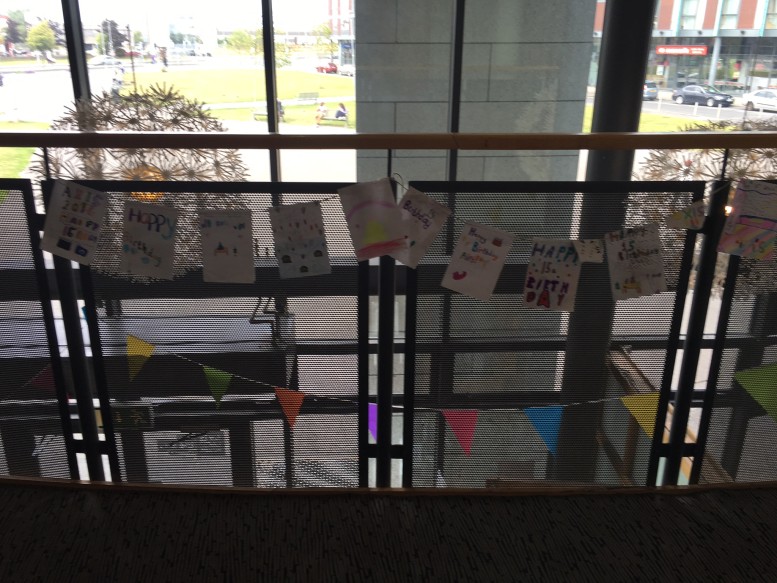
TOMMY: It’s interesting, because as a total outsider when I was telling people that I was coming here, every single person said, “Why are you going to Ballymun? Drugs?”
NIAMH: See, that’s frustrating because they’re stuck in perceptions that newspaper headlines in the 1980’s would have suggested. Now don’t get me wrong, I’m sure there’s drugs in Ballymun, there are drugs everywhere. There are still problems.
TOMMY: Watch your pockets was another thing people told me when I was coming here. So to come here and actually see what’s a really well organized, clean community, was a bit surprising to me actually. Because every single person I spoke to before coming here, in Dublin, on the west coast, had negative things to say about Ballymun.
NIAMH: Wow.
TOMMY: And not one person said, ‘That’s great.’” Not one. I mean, this is completely anecdotal. I didn’t talk to that many people, but.
NIAMH: Yeah yeah yeah. No. But it’s so funny because it’s very hard — I’m no longer able to pause my perceptions because I’m here every day. I’m here ten years, and I’m still a blow-in, but I very much feel that this community is in my heart. And I don’t mean that, again, in a noble or worthy way. I spend more time here than I do anywhere else, so I find it impossible to understand why people still think that way. And yet they do. All I can do about that is invite people out and tell them I’ll have the kettle on, the cup of tea ready. Encourage them.
There are so many organizations all over Ballymun doing incredible work. There are so many individuals. I probably haven’t even met half of them yet, and I’m here ten years. So, hopefully, time, and perceptions — I mean, it’s no longer the headlines, because, actually, I know enough of Axis’s work has been covered in the media. It maybe depends on what media people are consuming. I suppose you have to keep on doing the work. You have to keep on talking about the work, too, because you can get so busy doing it. Taking the time to talk about the work is also important, and that’s something I’ve learned.
A COMMUNITY IN RESIDENCE
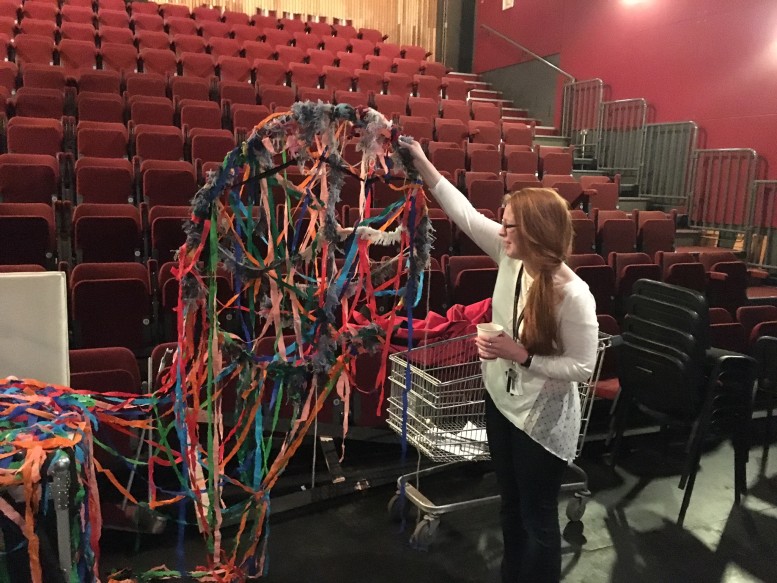
TOMMY: Let’s talk more about the individual works you’re doing here. How does Axis select people and institutions with which to partner, and what do those relationships look like?
NIAMH: That might be facilitating, that might be artist support. We have an arts residency at the moment. And it’s a partnership between Arts and Disability Ireland and Axis Ballymun. It is a paid residency, six months in Axis to be a resident artist. You don’t have to come up with a show, you don’t have to whatever.
TOMMY: And how is that artist selected. By Axis? By Arts and Disability Ireland?
NIAMH: We put out an open call, and then Arts and Disability Ireland and Axis review and score them, in accordance with some criteria. Do we think they could benefit. A lot of people come in going, “Here’s the show. I want to make a show.” And really it’s a residency to allow you paid time and space to allow you to be an artist and to see what might come. It’s not enough money for a show. And sometimes, opportunities are so scarce that people will give you a production when really you’re looking to say, “No, you’re an artist, and I want to resource you with that time and space.”
Particularly with the Arts and Disability Ireland partnership, which is fantastic, we do a lot of work in arts and disability, both with ADI, the organization, but also off our own steam. It’s something that we’re quite committed to. As part of that residency, there was an allowance of an amount of money to customize the space or provide for the access requirements of the artist, were there any. So for instance, if we had had an artist who was partially sighted, who wanted to use the dance studio, part of that bursary might have gone to making the white walls of the dance studio — like putting a black line all the way around the dance studio at eye level so that they could see where the wall was and not bump into it. This current artist in residence had mental health difficulties, so a lot of the time the access requirement it isn’t something that requires any recourses other than time and support. Or flexibility.
TOMMY: Fantastic. In addition to things like these residencies, I’m curious about the work you produce here. You mentioned being a venue earlier, and I know that you’ll host productions from places like the Abbey. But I’m really interested in the ways in which you succeed in engaging the community. What are some of the productions that have included Ballymun residents?
NIAMH: I’ll talk for a minute about the Threads project, which is a women-in-dance project headed up by our staff, who dance and who perform outside of their roles within Axis. And one of them, Emma Connors — she’s our arts development manager — was meeting a lot of women. You know, a lot of people, you get to them maybe through their kids initially, because they’ll do anything for their children or not at all think of themselves. Perhaps they’ll attend the odd show their kids might be in. We do art and drama, and we do our own summer camps and all of that stuff. And Emma was meeting a lot of women and thought there was a bit of an appetite for something and, after a good few conversations, came up with this dance program. It was once a week. You didn’t have to make every class. It was drop-in, drop-out. Obviously the more you were there, the more you could do. It was building towards a show, an amazing show actually. But all of a sudden there were women from literally 18-80, and I’m not joking. There was a woman who brought along her 18-year-old daughter, and then there’s an older woman, Marie Barrie — she won’t mind me naming her because she’s doing everything now — coming along and doing weekly dance classes.
They picked “Chicago” the movie as the theme for the first class because that was the style all the women were interested in. All shapes, sizes, and abilities, definitely. There was a huge, diverse mix. It was free. And because it was free, and because if something happened on a Tuesday where you had to work or something and you couldn’t make it, it was ok to show up two weeks later. So they kept on coming, and they kept on coming, and they started getting good. And the ones who kept on coming regularly started getting even better, and all of a sudden the group wanted to take it up a notch. And by the end of it, we did a screening of “Chicago” where all of the dance routines were performed by these women. Joe and Sean, our techies, did the design — not press play on a movie, and do a few dances; slick costumes, really great lighting design. We licensed the movie for two nights. We had to license it for a third. I mean, confetti cannons at the end, the works. This place was packed, and they were whoopin’ and hollerin’. And there were women saying, “Here I am. This is me. Tuesday nights were the one time of the week where I stopped being mommy, and I stopped being whatever else.” And they’re not all mothers either, that’s really reductive, but that was just one actual quote from a woman to us. And they danced!
TOMMY: Wow, amazing.
NIAMH: Some of them might have danced better than others, depending on what you were looking for. And it’s such a cliché, but the crackle, the confidence.
TOMMY: And Marie Barrie, was that her name, the 80-year-old?
NIAMH: Marie Barrie.
TOMMY: Marie Barrie. She was one of the women dancing?
NIAMH: She was wearing fishnets and everything!
TOMMY: So all of this is the result of the concerted movement to regenerate, as opposed to gentrify, the Ballymun community. These efforts didn’t just happen, correct, they were all by design?
My experience of the re-gen has been through the lens entirely of Axis activities… The one thing I’ll most honor is that this place came out of that process.
NIAMH: No, and it’s funny. My experience of the re-gen has been through the lens entirely of Axis activities. I know there’s new homes built, and there’s new parks, and there was supposed to be a shopping center and there isn’t, and some people think it was a really good thing and some people don’t. But the one thing I’ll most honor is that this place came out of that process.
TOMMY: This facility that we’re sitting in?
NIAMH: This, yeah. Axis came out of the re-gen, Axis came out of local people — groups, individuals, and artists — saying, “This is important to us, this is the type of space that we want and need.” And originally it was supposed to be two separate buildings. An arts center and a community center.
Another thing I’d like to say is that we do obviously a lot of work off-site as part of our arts development. We don’t do outreach. That word, you know, “I’m reaching out to you, and I’m here to help you and fix you and blah, blah, blah.” People don’t need us to do that. Honestly, they’re grand. Arts Development, though, is providing a certain amount of resources — space, time, talent, whatever that is — with a group who’ve expressed an interest and enabled that to happen. So our arts development will take us out into every local school. We do it in Irish, we do it in English. We work with artists with disabilities. We try to put a particular focus on being a more accessible venue for patrons and audience members with disabilities. A lot of people think physical disability, and they think “wheelchair.” Two-thirds of disabilities are invisible, so we try to be responsible and responsive. And just keep on doing that work. And providing access to spaces, so there’s a community rate for everywhere in this building. There’s a commercial rate. We’ll barter. You want to record your album in our studio? In exchange, can you do a series with young hip hop artists on the business end of the industry, because you’ve already done that? That kind of thing. It doesn’t need to have a value, but we’ll meet you where you’re at.
Author
-

Tommy O'Malley is a Brooklyn-based writer and performer. He is a former Artistic Associate at the Civilians. He produces the storytelling show Big City Stories in Brooklyn and Manhattan. He regularly appears on the podcast "Race Wars," hosted by Kurt Metzger and Sherrod Small, and co-hosts its spin-off podcast "Unhireable" with comic Keren Margolis.


